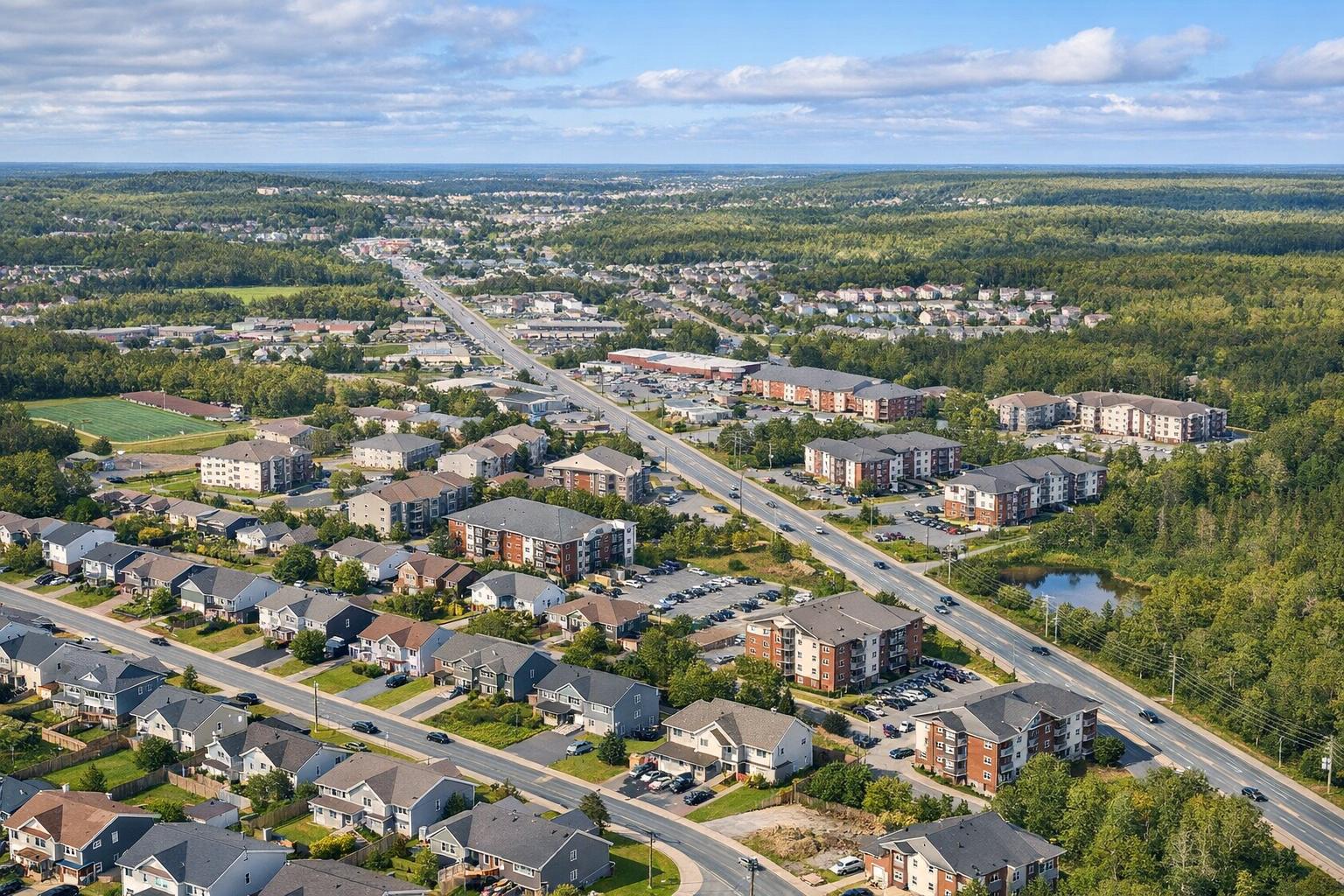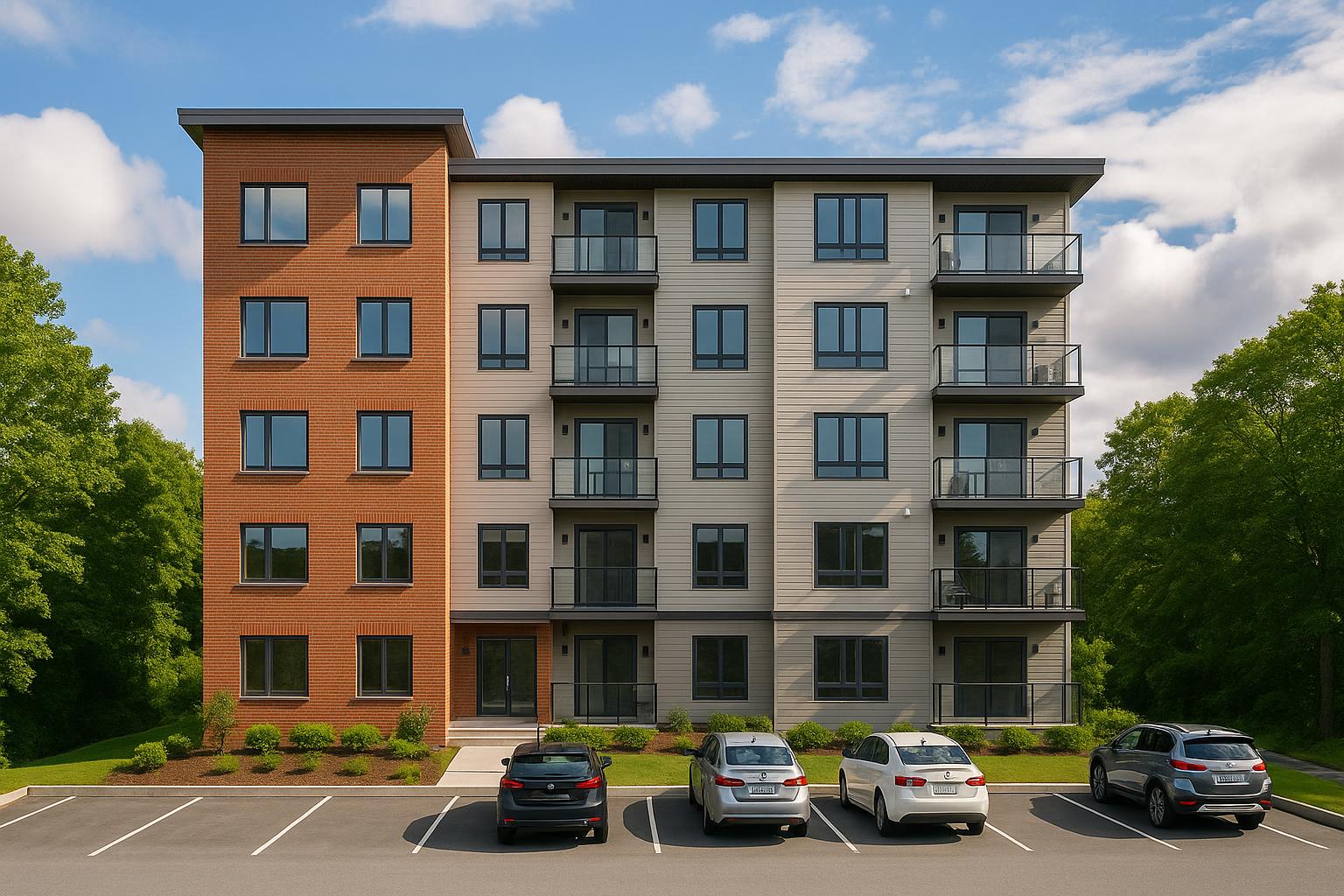Halifax’s heritage districts remain under ER-2 zoning, prioritizing low-density housing to preserve the area’s historical charm. While this zoning allows for single-family homes, duplexes, and small-scale commercial spaces, it imposes stricter design and density rules compared to ER-3 zones. Property owners face longer approval times and higher costs due to heritage compliance but can benefit from premium rental rates in these desirable neighbourhoods. Using an integrated design-build approach can streamline the process and help balance preservation with profitability.
What ER-2 Zoning Means in Heritage Districts
In Halifax's heritage districts, ER-2 zoning strikes a thoughtful balance between development and preserving the area's historical character. This zoning framework allows property owners to pursue projects that align with their goals while respecting the established look and feel of these neighbourhoods. Let’s break down the key aspects of ER-2 zoning and its implications.
ER-2 vs ER-3: Key Differences in Zoning
The main differences between ER-2 and ER-3 zoning revolve around density and design regulations. In ER-2 zones, the number of dwelling units per lot is more restricted, and there are stricter limits on building height and lot coverage. These rules are designed to maintain the low-rise, human-scale architecture that’s historically associated with heritage districts. On the other hand, ER-3 zones allow for slightly higher density, with fewer heritage-specific design requirements, making them more flexible for modern development.
Why Heritage Districts Retain ER-2 Zoning
Halifax Regional Municipality intentionally keeps ER-2 zoning in its heritage districts to safeguard the unique streetscapes and architectural styles that define these areas. By limiting density, the city ensures that any new construction harmonizes with the existing heritage buildings. This approach not only protects the visual and historical charm of the neighbourhoods but also takes into account the infrastructure constraints typical of older areas.
The Influence of Nearby ER-3 Development
The presence of ER-3 developments near heritage districts can have a ripple effect. On one hand, the contrast between higher-density ER-3 areas and heritage zones can increase rental demand, as people are often drawn to the character and charm of heritage neighbourhoods. However, it can also lead to challenges like delays in construction schedules and limited contractor availability. That said, infrastructure improvements tied to ER-3 developments can benefit nearby heritage districts, making construction timelines more predictable and enhancing the overall appeal of the area.
Heritage District Approval Process
Developing properties within Halifax's heritage districts requires navigating both municipal and heritage-specific approvals. While this process involves more steps than a standard ER-2 project, understanding how it works can help property owners plan ahead and avoid unnecessary delays. Below, we’ll break down the heritage design rules and the step-by-step approval process.
Heritage Design Rules and Requirements
Projects in heritage districts need to respect and complement the architectural character of the area. This often means aligning building materials, window styles, and roofing choices with the district's traditional aesthetic. Additionally, guidelines may govern building heights, lot coverage, and setbacks to preserve the area's historic streetscape and maintain its low-density feel.
Once these design requirements are understood, the approval process can move forward in a structured sequence.
Step-by-Step Approval Process
Preserving the heritage character of a district requires a thorough review at each stage of a project. This review process runs parallel to the standard development permit process. Here’s how it typically unfolds:
- Property owners start by submitting an application that includes design concepts, site plans, and material selections for heritage review. Any necessary revisions are requested to ensure the design aligns with heritage standards.
- Once the design passes the heritage review, the project moves to the formal municipal development permit stage. At this stage, the approved heritage design is integrated into the broader permit application.
Because the heritage review adds an additional layer of scrutiny, it’s important to anticipate longer timelines for project approval.
Common Challenges and Solutions
Navigating the heritage approval process can present specific challenges, but there are ways to address them effectively:
- Frequent design revisions: Heritage guidelines can require multiple adjustments to design plans. Engaging a heritage consultant early in the process can help streamline these revisions.
- Balancing tradition with modern standards: Conflicts may arise between traditional design requirements and modern building codes, such as energy efficiency standards. Using modern materials that replicate traditional appearances can provide a practical compromise.
- Seasonal and resource constraints: Delays caused by weather or limited contractor availability are common. Starting the planning process early and working with design-build teams familiar with heritage and modern construction can improve coordination and reduce unpredictability.
How to Maximize Returns in ER-2 Heritage Zones
To get the most out of projects in ER-2 heritage zones, careful management of budgets and timelines is essential. Strategic planning is key - know the regulations inside and out, anticipate potential approval delays, and ensure your milestones align with financial realities. By doing this, you can meet heritage requirements without jeopardizing your project's financial goals. One effective way to achieve this balance is through an integrated design-build approach.
Integrated Design-Build for Predictable Outcomes
The integrated design-build approach brings design, engineering, and construction under one management team, creating a smoother and more efficient process. Collaborating with heritage experts early in the project helps clarify requirements, reducing the risk of delays and unexpected costs. A great example of this approach in action is Nova Scotia's Helio Urban Development, which has shown that fixed-price construction projects can be completed on time using this method. By focusing on well-defined timelines and disciplined budget planning, this approach ensures heritage projects stay on track while maximizing financial returns.
sbb-itb-16b8a48
ER-2 Heritage vs ER-3 Zone Comparison
The differences between ER-2 heritage districts and ER-3 zones come down to density, design, and development processes. ER-3 zones allow for higher density and offer flexibility in modern design, making them ideal for larger-scale projects. On the other hand, ER-2 heritage districts prioritize preserving historical character, enforcing strict design rules to ensure new developments align with the area's established aesthetic. This often limits developments to smaller scales.
When it comes to municipal approvals, ER-3 zones typically provide a smoother and faster process due to their more flexible regulations. In contrast, projects in heritage districts face additional layers of review to meet stringent design guidelines, which can extend approval timelines. However, using an integrated design-build approach can help keep overall construction timelines manageable, even in heritage districts. These procedural differences highlight the importance of selecting the right construction strategy for each zone.
Cost considerations also vary significantly between the two. ER-3 projects often benefit from economies of scale and streamlined construction processes, which can reduce per-unit costs. Meanwhile, ER-2 heritage developments may involve higher upfront costs due to extended approval times and detailed design requirements. However, these costs are often offset by the premium rental rates such properties can command, thanks to their desirable locations and unique historical character. Over time, this can translate into stronger market positioning and higher rental yields.
Tenant preferences further distinguish these zones. ER-2 heritage properties attract tenants who value historical charm and a sense of connection to the past. In contrast, ER-3 developments appeal to renters seeking modern amenities and efficient use of space. These differing preferences influence rental income and occupancy patterns, shaping the financial outcomes of projects in each zone.
Ultimately, ER-3 projects excel in design flexibility and efficiency, catering to those focused on volume and cost-effectiveness. Meanwhile, ER-2 heritage developments, though more expensive per unit, offer premium rents and long-term appreciation. Property owners must weigh their investment timelines and risk tolerance to decide which zone aligns with their goals. Both approaches have their strengths, but they cater to distinctly different markets and priorities.
Building Multi-Unit Properties in Halifax Heritage Districts
Constructing multi-unit rental properties in Halifax's heritage districts involves striking a balance between preserving history and ensuring profitability. While ER-2 zoning limits density compared to ER-3 zones, heritage districts like the South End and North End present unique opportunities. These areas, with their historical charm and prime locations, often command higher rental rates, making them attractive for property owners who understand the nuances of development in such spaces.
Developing in heritage districts does come with challenges. Higher upfront costs are required for design compliance, and approval timelines tend to be longer. However, these expenses are usually offset by the premium rents that heritage properties can attract. Tenants are often drawn to the unique character of these areas, which allows property owners to achieve strong and stable returns.
When it comes to construction, fragmented methods - where separate architects, engineers, and contractors are hired - can lead to costly delays, especially when heritage compliance issues arise. Each professional works independently, which can result in miscommunication and extended timelines.
An integrated design-build approach offers a solution. By housing architects, engineers, and contractors under one roof, this method ensures smoother coordination. If heritage design requirements change during the approval process, the entire team can adapt together, avoiding the need to renegotiate contracts. This approach reduces the risk of budget overruns and keeps projects on track.
To further manage costs, many developers turn to fixed-price models. These provide cost certainty, even when unexpected heritage compliance modifications arise. In contrast, cost-plus construction models often lead to budget overruns of 30-60% when heritage-specific changes are needed. With efficient scheduling, construction timelines can still remain close to six months, despite the additional time required for approvals.
Heritage properties also appeal to tenants who appreciate historical architecture combined with modern amenities. Offering features like energy-efficient heat pumps, high-quality finishes, and smart home technology not only attracts long-term tenants but also enhances rental yields and the overall value of the property. Tenants in these districts tend to stay longer and are willing to pay a premium, ensuring steady cash flow for property owners.
For those considering development in Halifax's heritage districts, it’s essential to plan for longer approval processes while factoring in the potential for higher rental income and long-term appreciation. Partnering with professionals experienced in heritage compliance and efficient project delivery is crucial.
FAQs
What are the advantages of using a design-build approach for developing rental properties in Halifax's heritage districts?
The design-build method brings some notable advantages for property owners working within Halifax's heritage districts. By merging design, engineering, and construction into one cohesive process, it helps cut down on delays, makes project management more straightforward, and ensures heritage preservation guidelines are met without unnecessary complications.
With fixed-price contracts, you get more financial predictability and control, steering clear of surprise expenses that often come with traditional construction methods. This approach also allows for greater design adaptability, enabling you to develop multi-unit rental properties that not only adhere to heritage regulations but also optimize your return on investment (ROI).
How do approval timelines and costs in Halifax's ER-2 heritage zones compare to ER-3 zones?
Approval processes and costs in ER-2 heritage zones tend to be more restrictive and expensive than in ER-3 zones. ER-2 areas, often found within heritage districts, usually limit development to two units and enforce strict heritage preservation rules. These regulations can lead to longer approval timelines and higher expenses, as specialized designs and compliance measures are often required.
On the other hand, ER-3 zones offer greater flexibility, allowing up to three units with fewer heritage-related restrictions. This typically means faster approvals and lower construction costs, making ER-3 zones a simpler option for multi-unit developments. For property owners in ER-2 zones, it’s essential to account for these added requirements when planning projects to stay within budget and meet compliance standards.
How can property owners in Halifax's ER-2 heritage districts develop profitable multi-unit rental properties while meeting heritage requirements?
Maximizing Profitability in Halifax's ER-2 Heritage Districts
Property owners in Halifax's ER-2 heritage districts can take several smart steps to ensure their investments are profitable while respecting the area's historical charm.
One of the first things to consider is tapping into heritage conservation grants and incentives. These programs can help offset some of the costs associated with development, making projects more financially viable. It's also wise to engage early with heritage and planning authorities. This proactive approach can help smooth out the approval process and prevent delays that could increase expenses.
Instead of focusing on new construction, consider internal conversions. This strategy allows you to increase density within existing structures, preserving the unique character of heritage properties while making better use of the space. Sticking to heritage preservation guidelines is another key move - it can simplify design requirements, speed up project timelines, and ultimately boost your return on investment.
With thoughtful planning and by taking advantage of the resources available, property owners can successfully navigate the challenges of developing in these heritage districts while maintaining profitability.



